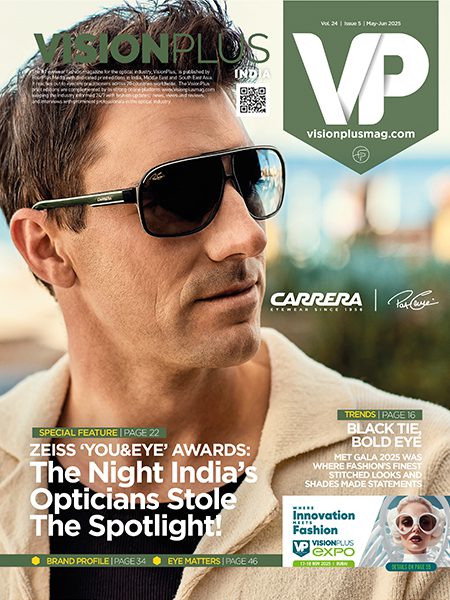
Use History to Choose Your Eyewear!
Listen to this article
Ever wondered how history could influence your choice of eyewear? Here’s Milica Jojic, a graduate student at Fordham University, coming to you from New York with a style guide to help you pick out your next glasses!
Denon Eyewear released a new sunglass collection for spring/summer 2022 and I got a new pair of sunglasses. They were an acetate aviator pair, described as “aviator with modern colorways and scale.” They were also inspired by Princess Diana’s fashion and street style. This made me wonder about all the frames out there and where they came from. What or who was their inspiration drawn from? Would the small and round retro shape from the 1970’s been as famous if John Lennon hadn’t worn it? How did Ray Ban’s aviator sunglasses become the symbol of the US Army Air Corps? Admittedly, they were the first pair to feature an anti-glare lens with lightweight metal but for generations after, they symbolised fashion in the entertainment industry. For example, Carrera’s Boeing series was popularised in the late 1980’s when it was released and they came from a technology and performance standpoint. How does the history of eyewear popularise some frames and leave others behind? And how do we know if we’re choosing a particular pair for how it fits us vs how popular it is? This feature will help you decide on which eyewear to buy so that it fits your face but also your personal style.

If we really think about it, our favourite pieces, that we now consider statement pieces, originated from such diverse backgrounds and were popularised by celebrities and pop culture of the period they were released during. Inspiration is all around us and a lot goes into creating a pair of glasses.
Firstly, the obvious two are shape and colour. The shape itself can traditionally be rectangle, round, square, cateye, or oval. Then those standard shapes can also be softened or sharpened to create a completely different frame. The aviator frame can be designed with sharper edges while geometric or browline options can be incorporated for a bolder look. We also can’t forget the wayfarer which was popular in the 50s and 60s and worn by superstars, then and now, in real life and on screen. If I say Leonardo DiCaprio in “Wolf of Wallstreet” or Daniel Craig in “James Bond,” you picture two completely different frames and styles and that is the beauty of diversity in the eyewear industry.

The colours come next, from neutral to loud hues, from solids to patterns, the options are endless. If we mix in the different combinations of lens colours too, we have an abundance of unique opportunities. Finally we have size and material. Eyewear companies try to offer a range of sizes for various faces. For optical glasses, you want some advice on size depending on your prescription. However for sunglasses, you have a choice between a regular fit, a petite one or an oversized one. I personally go for frames that don’t cover my eyebrows as I feel they cover my entire face then. And material might not be as pivotal for consumers as it is for manufacturers but it’s good to know your options. Acetate or natural cellulose frames differ from metal ones and metal ones differ among themselves. From titanium to stainless steel, each material has a unique selling point and is worth considering.
Celebrities have popularised various looks and it’s not uncommon to see a bold, thicker acetate pair of glasses on Jennifer Lopez, Lupita Nyong’o or Gigi Hadid. Prince William and Emma Watson go for thin, barely noticeable frames while Jay-Z and Julia Roberts are fans of thicker and oversized styles. To each their own. However, how should you know what works for you? Below, I’ve compiled a quick style guide:
Style
Do you like thin and light frames or do you prefer thicker and bolder ones? Do you want your eyewear to be modest or do you want them to be very noticeable? I would say this depends on your personality but style is definitely the first thing to look at.
Shape
There are certain guidelines for which shapes look good on which faces. For example, oval faces can wear almost any eyewear shape. Rounder faces work well with rectangle and square shapes as well as geometric and aviator ones. For square faces, you want to pair them up with oval and round shapes instead of rectangular or geometric ones. Triangular faces might not look as good in rectangular shaped eyewear, browline or oval faces as much as in a wayfarer, round and cateye. And finally heart shaped faces look great wearing cateye, wayfarer, rectangle, browline or oval shaped eyewear. This is standard advice that works for most. However, it is always entirely up to you and what you like to see yourself in.

Colour
Finally, we have colour. Depending on your skin tone, hair and eye colour, you might opt for specific solid colors or patterns for your eyewear. I love how light blue or green eyes match with darker frames while darker skin tones go perfectly with lighter ones such as translucent pink. This contrast emphasises the beauty of not only the individual but also the frame. Although any colour works on anyone, brown eyes typically go well with tortoise, green and gold. Black hair matches perfectly with metallic frames while bond hair is easily complimented by soft shades of blue or pink.
At the end of the day everyone should choose a frame that they love regardless of what a guide says. However, if you have no clue about eyewear, this is a good place to start.







